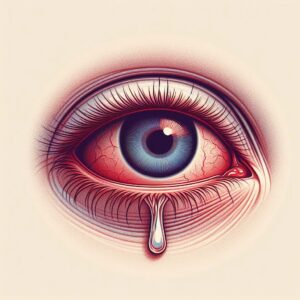
Are your eyes feeling scratchy, dry, or irritated? You might be suffering from dry eye syndrome, a common condition that can be quite bothersome. But worry not! We can help you find relief.
This blog will guide you through everything you need to know about dry eyes, from understanding the causes and symptoms to exploring different treatment options.
What are Dry Eyes?
Dry eyes simply mean your eyes aren’t producing enough tears, or your tears evaporate too quickly. Tears are essential for lubricating your eyes, keeping them comfortable, and fighting off infections. When your eyes are dry, they can feel irritated, gritty, or even burn.
Read more: How to Choose a Suitable Eye Doctor in Delhi?
Types of Dry Eyes:
There are two main types of dry eyes:
- Dry Eyes Due to Reduced Lacrimation: This happens when your tear glands don’t make enough tears. Age, certain medications, and medical conditions can all affect tear production.
- Evaporative Dryness: This occurs when tears evaporate too quickly, often due to environmental factors or problems with your eyelids. A common cause is Meibomian Gland Dysfunction (MGD), where the glands that produce the oily layer of your tears become blocked.
Common Causes of Dry Eyes:

- Age: As we get older, our bodies produce fewer tears. This natural decline can lead to dry eyes, especially in individuals over 50. Women are particularly affected after menopause due to hormonal changes.
- Climate & Humidity: Windy or dry conditions can increase tear evaporation. Low humidity environments, such as air-conditioned offices or heated homes, can contribute to dry eyes.
- Screen Time: Staring at screens for long periods can reduce blinking, leading to more tear evaporation. This phenomenon is often referred to as “computer vision syndrome.”
- Contact Lens Use: Wearing contact lenses can exacerbate dry eyes, especially if the lenses are not designed for long-term wear or if they are not properly cleaned and maintained.
- Environment: Dry climates, wind, and air conditioning can all dry out your eyes.
- Medical Conditions: Several medical conditions can lead to dry eyes, including:
- Autoimmune diseases: Conditions like rheumatoid arthritis and lupus can affect tear production.
- Thyroid disorders: Conditions that affect thyroid function can impact eye health.
- Medications: Some medications, like antihistamines, decongestants, and antidepressants, can cause dry eyes as a side effect.
- Meibomian Gland Dysfunction (MGD): The Meibomian glands are responsible for producing the oily layer of tears, which prevents evaporation. If these glands become blocked or dysfunctional, it can lead to evaporative dry eye. This condition is often related to chronic eyelid inflammation (meibomi).
Read more:Eye Allergies Got You Down? Relief Strategies for Itchy, Watery Eyes
Symptoms of Dry Eyes:

- Dryness and scratchiness in your eyes
- Redness and irritation
- Burning or stinging sensation
- Watery eyes (ironically!) – Ironically, dry eyes can lead to excessive tearing. When your eyes are dry, they may produce more tears in an attempt to compensate, leading to watery eyes.
- Blurred vision
- Sensitivity to light
- Diagnosis: We’ll perform a complete eye exam to determine the type and severity of your dry eye.
- Lifestyle Changes: We’ll discuss simple adjustments you can make to reduce symptoms, like using a humidifier, cessation of smoking, home-based eye exercises, taking breaks from screens, or wearing sunglasses.
- Over-the-Counter Treatments: Artificial tears, ointments, and eyelid hygiene products can provide relief.
- Prescription Medications: In some cases, prescription eye drops or medications may be necessary.
- Procedures: If needed, we offer minimally invasive procedures to address tear drainage or improve gland function.
- Punctal Plugs: These small devices can be inserted into your tear ducts to block drainage, helping to keep tears on the surface of your eyes longer. This can be particularly useful for those with moderate to severe dry eyes.
- Punctal Occlusion: If punctal plugs are ineffective or not well-tolerated, your doctor may recommend a more permanent solution by surgically closing the tear ducts.
- Meibomian Gland Expression: This procedure involves manually expressing the Meibomian glands to remove blockages and improve oil production in the tears.
- LipiFlow: This is a thermal pulsation treatment that warms the eyelids and massages the Meibomian glands to improve their function.
If you’re experiencing dry eye symptoms in Delhi, schedule an appointment with VIEW CARE Eye Hospital. We’ll help you find relief and get back to feeling your best.
Remember, early diagnosis and treatment are key to managing dry eyes effectively.
References
- American Academy of Ophthalmology. (2021). Dry Eye Syndrome: Overview. Retrieved from aao.org.


